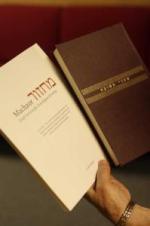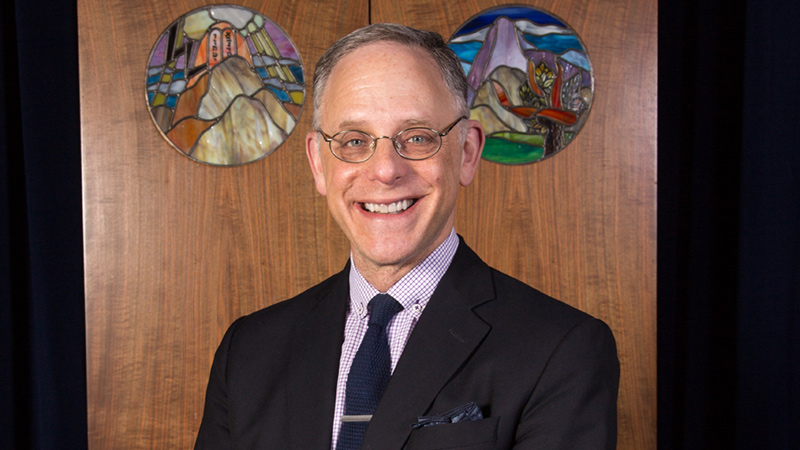
As a member of the editorial team creating the new High Holy Day prayer book, I can report on behalf of all of us that we are not creating a book, per se, so much as a sacred component that is part of the solution to a problem (or set of problems). Therefore, before any decisions could be made concerning the book itself, we needed to make sure we accurately defined the problem. So we began by spending a number of months devising a vision statement. This statement not only reflects the solution we would be proposing in the form of a sacred book, but also the challenges such a book would seek to address.
The editorial committee that produced this statement consisted of Rabbis Janet Marder, Sheldon Marder, Leon Morris, Elaine Zecher, Hara Person, Cantor Evan Kent and myself.
Here is how the Vision Statement begins:
Teshuvah is the chief goal of the Yamim Nora’im, and a machzor is our indispensable manual and guide. We aim to create a machzor that will serve Reform Jews as they seek repentance, new direction, and a sense of return to God and the Jewish people.
We envision a 21st century machzor that…
- provides meaningful liturgy to those who pray regularly, and welcomes those who are new to Jewish spirituality and practice;
- inspires Reform Jews to participate in the multifaceted experience of the Yamim Nora’im— from feelings of awe to moments of solace, from the solitude of contemplation to the solidarity of song and worship;
- draws from the deep wellsprings of Jewish liturgy, history, thought, music, interpretation and creativity;
- guides worshipers, in accessible ways, through the journey of teshuvah and cheshbon hanefesh;
- values continuity and incorporates the outlook of the 21st century Reform Jewish community of North America;
- bridges the personal and the communal, the ritual and the ethical dimensions of the Yamim Nora’im.
What do we learn from this excerpt of the Vision Statement?
In designing a machzor we find it helpful to begin with the end in mind. Specifically, by the end of Yom Kippur how will the worship experience affect the worshippers? How will their lives have changed? What will be different? The simple answer is to suggest that teshuvah will have occurred, but what does this mean? Certainly it seems impossible to measure the inner life of a person, so would we even know if we had succeeded? Such is the work of rabbis that we will never know for sure if the experiences we provide lead to the results we desire. Nevertheless, even if we cannot know for certain where people end up, we most assuredly should design the best “map” possible. Hence our machzor will be designed to lead the worshiper to an end in which the various services build up to a climax where painful truths are realized, change is considered and adopted, and the individual leaves with a plan or at least with the aspiration for self-improvement.
The diversity of our movement means that people come in to our doors with such widely different experiences, expectations and needs, One aspect of our approach is to offer diverse views of God so that worshipers can find a model that work for them as well as be exposed to other views of God. The more traditional, hierarchical view is offered as well, in keeping with the essential message and tone of these days. Therefore we know the greatest challenge of the book will most likely be how to reflect this tradition while at the same time not turning off all those who cannot reconcile such views with the God in which they want to believe.
We know as editors that there is going to be some form of Unetaneh Tokef in the book. Because of the theology expressed in Unetaneh Tokef, this liturgical rubric presents significant challenges to some participants, and is seen as essential to the experience for others. Thus, in addition to the more traditional approach to God we will offer various images of God that challenge the classical hierarchical model, making use of poetry and well-chosen contemporary metaphors.
Most important to our work are the people for whom this book is intended: the members of a dynamic, ever-changing and diverse Reform Movement who gather in community to experience awe and forgiveness and hope. Creating a new machzor for the Reform Movement is a daunting task and we are humbled by the challenge. Nevertheless, we are guided by a clear vision of what we wish to produce, as well as aided by the outstanding work of those who prepared earlier machzorim and siddurim. Shortly after beginning work on the machzor I came across an original 1895 UPB II, with my great-grandfather’s name inscribed inside. I enjoy imagining Lewis Wessel praying with this book at Shaaray Tefila on the Upper West Side, and reflecting on what the words within would have meant to him. Our new book will be quite different, of course, but if we succeed it will seek to solve the same essential problem: how do we help ourselves return to our sacred path, in a world that continually seduces us away from the work that we must do.
Rabbi Edwin Goldberg has served as the senior rabbi of Temple Judea in Coral Gables since 1996. In July he will begin serving as the senior rabbi of Temple Sholom of Chicago. He is the coordinating editor of the forthcoming CCAR Machzor and is the author of five books. His newest book is, Saying No and Letting Go: Jewish Wisdom on Making Room for What Matters Most.


